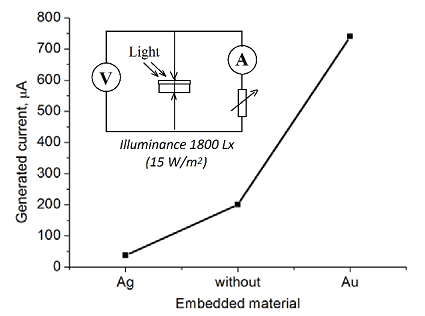
Alexander Axelevitch
Holon Institute of Technology, Israel
Title: Solar cells efficiency enhancement by plasmons generation
Biography
Biography: Alexander Axelevitch
Abstract
The urgent need to develop alternative energy source focuses the attention on solar energy as a solution for this problem. The sun represents an infinite renewable energy source, thus making it most attractive. Unfortunately, the efficiency of photovoltaic (PV) converters is limited due too high electrical and optical losses. It is known that each photon can produce only one pair of charged carriers. This is one of the most important factors limiting the efficiency of solar cells. In order to increase the efficiency of PV conversion, it is necessary to increase the number of charged particles generated by absorption of a single photon. For this goal, we apply the nano-structured metal thin films which capable to form a localized surface plasmon resonance (plasmon) in each metal nanoparticle under light illumination. A plasmon represents an ensemble of free electrons (holes) oscillating coherently inside the metal nanoparticles and can be considered as a source of additional electrons obtained due polarization of these metal nanoparticles. If the nanostructured metal thin film will be embedded in the p/n junction of a diode PV structure, we may to create the conditions which help to transfer additional electrons excited by light illumination to the conductive band of the applied semiconductor. This effect has been experimentally tested in our laboratory in different PV structures containing gold and silver nanoparticles. It was found that island thin metal films deposited by sputtering and embedded into the p/n junction significantly influence of the PV structure efficiency and the type of metal defines its behavior. The power generated in the heterojunction structures In2O3-Si with the gold island interlayer increases more than to 10 times comparing with the structure without gold nanoparticles. This technology may be applied for all types of inorganic solar cells.

Figure 1: Comparison of the short-circuit current in different PV structures.
Recent Publications:
1.Axelevitch Alexander (2016) Application of embedded metal nanostructures for solar cells. International Journal of Renewable Energy Sources 1: 32-37.
2. Axelevitch A, Apter B (2015) In-situ investigation of optical transmittance in metal thin films. Thin Solid Films 591: 261-266.
3.Golan G, Axelevitch A, Azoulay J (2014) Properties investigation of thin films photovoltaic hetero-structures. World J. of Engineering 11(3): 233-238.
4.Axelevitch A, Gorenstein B, Golan G (2014) Application of gold nano-particles for silicon solar cells efficiency increase. Applied Surface Science 315: 523-526.
5. Axelevitch A, Palankovski V, Selberherr S, Golan G (2015) Investigation of novel silicon PV cells of a lateral type. Silicon 7(3): 283-291.


